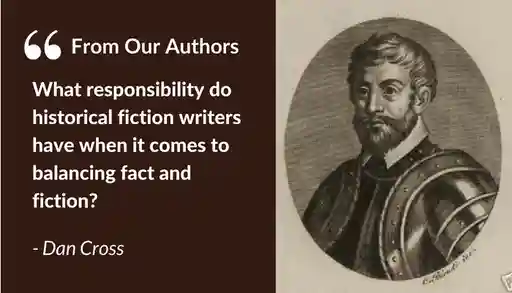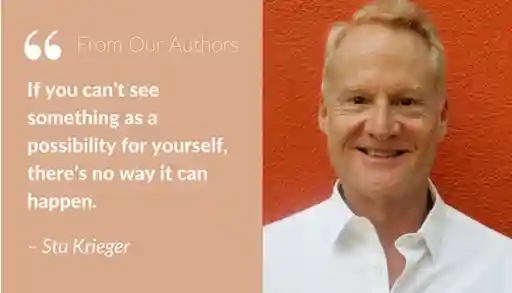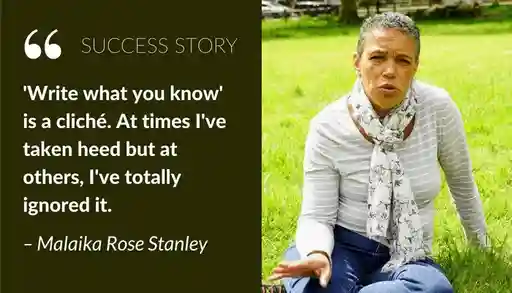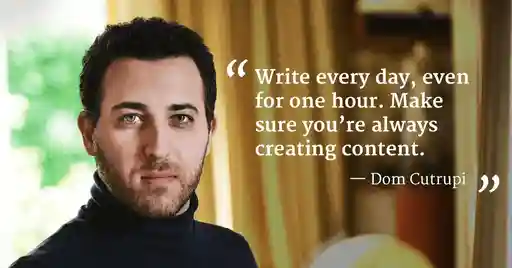Last updated on Oct 15, 2025
My Building-Block Approach to Writing a Novel
Martin Cavannagh
Head of Content at Reedsy, Martin has spent over eight years helping writers turn their ambitions into reality. As a voice in the indie publishing space, he has written for a number of outlets and spoken at conferences, including the 2024 Writers Summit at the London Book Fair.
View profile →Dan Burns is the author of A Fine Line and Recalled to Life. He is also an award-winning writer for the screen and stage. In this article, Dan talks about overcoming the “where do I start?” question that plagues many writers at the onset of their career. His advice for overcoming that doubt? Start small, and see where your story takes you.
Since my earliest days as a writer, I have always been apprehensive about big and lengthy projects — the novel in particular. I feared that I would spend months or even years on a project, tens of thousands of words down onto the page, only to realize that the story wasn’t any good. That would be a shame, and an unfortunate mismanagement of my time. So instead I’ve always started small and built an idea gradually, one successful step at a time.
Teaching my story to walk before it runs
When a story idea is pressing on my mind, urging me to act upon it, I always try to explore and develop the idea quickly through a shorter story form. If it’s good, I’ll consider publishing the poem or short story that results. If it’s very good, the story idea will not leave me alone; it will nag at me to continue. At that point, I might consider developing the story further as a screenplay or novel. That’s what happened with the idea for Sebastien Drake, the protagonist in my latest novel, A Fine Line.
In April of 2010, Sebastien Drake first appeared in a short story I wrote, titled Letting Go. The story was my first effort to find out who Sebastian Drake really was, and what he had the potential to become. I needed to get some insight into his past, his demons, his special skills, and his possibilities for the future. I sat him at a table in a coffee shop, across from a friend he hadn’t seen in 25 years, and I let them talk. What happened in that coffee shop scenario changed my writing career forever.
To get to know my character, I sat my him across from a friend, and I let them talk.
Click to tweet!
When I finished the story two days later, I found that I had created more questions than I’d answered. I was intrigued by what I had written so far and wanted to know more. I needed to know more.
Reverse adaptation: from screenplay to novel
Subsequently, in January of 2012, I wrote a 22-page screen treatment based upon Letting Go, which outlined the screenplay I planned to write based on Sebastian Drake. It took me a year — full of long days, and a severe amount of revision and cutting — until I was finished with the screenplay. When I was, Drake’s story had taken another big step forward.
I embarked on a project to bring Sebastian Drake to his ultimate story platform in 2015: the novel. In a reverse adaptation process, using the screenplay as a basis, the newest edition of Sebastian Drake’s story took form. The book was published this June and is now being shared with the world.
My building-block approach to writing
Writing using this kind of “building-block” process appeals to me because it gives me confidence about my story. Using various different narrative forms makes me feel more comfortable because I know my story’s been tested. There are other benefits to this process as well: most importantly, after I’ve completed a smaller project like a short story, I have a basis, a springboard, for moving forward and developing the story further. I also have another marketable product. It’s hard to become a successful writer based upon one book or project. With each new project I complete, whatever form it make take, I’m better able to substantiate my credibility as a writer.

Are there any negative aspects to my building-block approach? I really have not experienced any, except for the fact that it might take me longer to get a bigger project, like a novel, completed and published. I can live with that fact, because in the end I know the project is well thought out and fully developed.I also know that I’ve given the story the time and effort necessary for it to come to life.
Beyond the story — creating the perfect cover
Writing A Fine Line was a rewarding process, but to make the book perfect and ready for publication, I knew I had to have a great book cover. It was essential that my cover be eye-catching — something that says “thriller” while also standing out from other books of the same genre. That’s where Reedsy stepped in to help. I knew what I wanted, and it was easy for me to select Tom Sanderson to help me design the perfect cover. I live in the US and Tom was in the UK, but with Reedsy, geography is no barrier. Tom was great to work with. I told him that I wanted my book to “fit” nicely on any bookstore table between the books of Lee Child and James Patterson. As you can see, Tom hit the mark.
Stop asking, “Where do I start?” and just start
Many people talk about being a writer but have difficulty actually getting started. Writing is hard, and often the ideas are there but the approach is elusive. Where do I start?
I get that: it’s scary to put yourself out there and not see your ideas pan out the way you want them to. That’s why I recommend starting small and building on an idea over time. This approach helps me maintain my status as a working writer and overcome roadblocks.
If putting your ideas out there scares you, start small and build your story slowly.
Click to tweet!
As for Sebastian Drake, he continues to bug me to write as his story still has so much room for growth. I can only imagine where he’ll take me next.
A Fine Line is available in hard cover and on Amazon Kindle.
For more information, visit Dan Burns' website.
Please share your thoughts, experiences, or any questions for Dan Burns, in the comments below!






